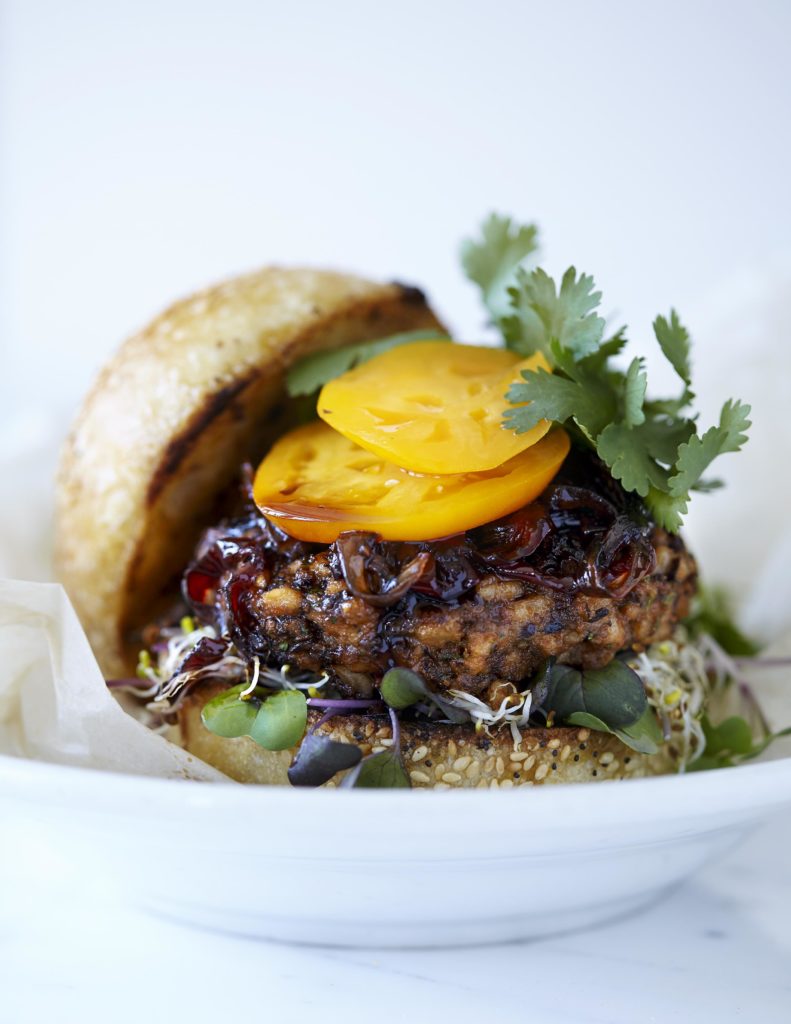Farro is a tiny variety of wheat that looks a lot like wild rice, and it’s an amazing grain! It’s similar to brown rice in its texture and flavor, but it has a slightly nuttier and earthier taste. It’s delicious in salads, on the grill, and in soups and stews. Farro is gluten- and yeast-free, making it an excellent choice for people with Celiac disease or other food allergies.
For some, eating was something that they had to do. If they wanted to eat, they just did it—no questions asked. For others, food was something they did for pleasure. Eating was simply a way to give their body the nutrition it needed to function properly.
Farro is one of the most versatile grain I know of. It is a whole grain and is a great source of protein, fiber, and B vitamins, and it does not have any gluten or other grains in it. That makes it good for those who are gluten-intolerant or have irritable bowel syndrome.
A Quick Look
Farro is a tasty and nutrient-dense grain. It was cultivated around 10,000 years ago and was prized by Egypt’s pharaohs. It is also said to have fed Roman troops. Farro is a chewy grain with a nutty flavor that may be boiled in water or broth and added to soups, salads, and other meals. It can also be prepared like pasta. It’s a great addition to your pantry since it’s high in protein, fiber, magnesium, and vitamins A, B, C, and E.
Overview
Farro is a delicious and healthy ancient grain, but its definition is a little hazy beyond that. Spelt, emmer, and einkorn are three distinct types of wheat that are referred to as spelt, emmer, and einkorn, respectively. All of these wheat species are hulled, which means they can’t be threshed.
In Italy, the term farro specifically refers to emmer, commonly known as “genuine” farro. The grain is sold dry and should be boiled in water or broth until soft yet crispy. It may be eaten on its own, although it’s more common in salads, soups, and other meals. It may also be used as a pasta substitute. Farro is strong in protein, rich in vitamins, low in carbs, and low in calories, and is known for its wonderful, nutty taste.
Farro, like barley, is available pearled or semi-pearled. The semi-pearled form contains more fiber and nutrient-dense bran than the pearled variety, which doesn’t.
Farro may also be purchased whole, which requires an overnight soak before cooking.
Finally, farro (or emmer) flour may be purchased or made at home.
Farro is not gluten-free since it is a kind of wheat.
Identification
Although you’re not likely to have to identify farro in the field, true farro, (Latin name Triticum dicoccum) has two spikes on its husk. It is a tetraploid, meaning it’s a cross of two ancient diploid grasses. Unlike common modern wheats, which tend to be polyploids with six or more chromosome sets, it has only four.
Individual grains range in color from light to medium brown. They are elongated and measure 6 to 8 mm in length.
Nutritional Information
Uncooked emmer wheat or farro has 150 calories, 1 gram of fat, 32 grams of carbs, 6 grams of protein, and 3 grams of fiber, or 11% of your daily needs. It’s rich in iron and calcium, and it’s also a good source of vitamin A, vitamin C, vitamin E, and B vitamins.
Selection
Farro that is ready to cook may be found at Italian grocery shops, health food stores, and sometimes in ordinary grocery stores. However, finding this grain may be difficult. This is partially due to a disagreement about terminology.
It’s also difficult to tell if you’re purchasing whole, pearled, or semi-pearled farro after you’ve found genuine farro. The information on packaging is often contradictory.
One thing is certain: farro, in whatever form it takes, is a tiny brown grain with a nutty flavor that cooks up al dente. After everything is said and done, whatever type you choose will taste great if you follow the packaging instructions.
Storage
Keep farro grain in a container that enables it to breathe in a cool, dry area. It will keep for approximately 18 months in the refrigerator.
Emmer flour should be stored in a well sealed container. In the pantry, it will last approximately a month, and in the refrigerator, it will last two to three months.
Farro may be kept in the fridge for a few days after cooking.
Preparation
Before cooking, always rinse farro with cold water and drain well.
To cook whole grain, bring two parts water to a boil with one part grain, then simmer for 30 minutes for an al dente texture or longer for a softer texture.
Farro may also be cooked in a rice cooker. Take a look at the brown rice option. Another alternative is to use a crockpot, however this technique will take 3 to 4 hours to cook.
The risotto technique of cooking results in a delectable taste. Sauté an onion in olive oil, then add the farro and stir for a few minutes before adding the liquid and salt. Cook for 30 minutes, stirring occasionally. After draining and dressing the farro, you may use it in other dishes or eat it as a side dish.
If soaked overnight, raw grains may be eaten whole as a morning meal.
Farro may be flaked and eaten as a morning cereal or used to baked products in its whole form. You may also mill your own flour, but don’t use a coffee grinder since it won’t be powerful enough to handle the kernels.
Sprouting the whole grain and adding the sprouts to salads and sandwiches is another alternative.
Farro Burger with Red Pepper Relish (recipe)

Want to try something different with your burger? Give this dish a go; you won’t be disappointed. These burgers are flavorful and will leave you craving more.
Ingredients
BURGER: washed and cooked farro 1/2 cup drained black beans 1 can extra virgin olive oil (540 mL) 2 tbsp cinnamon 1 tbsp adobo chipotle peppers (canned chipotles) 2 coriander leaves 1 tblsp. salt and pepper (to taste) oil made from coconut 3 tablespoons RELISH: Sweet red pepper (sheppard’s pepper) chopped into tiny bits 1 big garlic clove, minced 1 large onion, minced 1 medium rosemary (leave entire or remove needles) 1 tbsp. extra virgin olive oil (from the spring) 1 tablespoon balsamic vinaigrette a quarter cup of maple syrup 2-3 dashes Worcestershire sauce 1/4 cup
Directions
Time to Prepare: 30 minutes 30 minutes to prepare 5 burgers per batch
To make the burger:
Rinse the farro in cold water through a mesh strainer. Follow the package’s cooking directions. Drain any leftover water from the farro and let aside for 10 minutes.
In a food processor, combine the cinnamon, chipotle peppers, olive oil, cilantro, and half of the rinsed black beans. Process until you get a thick paste.
Fill a large mixing basin halfway with the contents of the food processor. Combine the farro, remaining black beans, and salt and pepper in a mixing bowl. Stir the contents of the bowl well using a spatula.
On the counter, place a piece of parchment paper. Form five tiny burger patties using your hands.
Set a medium-high burner to a skillet or big frying pan. Allow a few minutes for the pan to heat up. When the pan is heated, add the coconut oil and distribute it around to coat the bottom. Cook until golden brown on both sides and heated in the middle, then add the burgers.
Serve on a bun with your favorite relish, greens, and condiments. Refrigerate any leftovers.
Directions for Relish:
Place a medium-sized pan on a medium-high flame. Allow a few minutes for the pan to heat up. Once the pan is heated, add the onion, garlic, and pepper, stirring constantly to achieve uniform frying. For a few minutes, sauté .
Stir in the remaining ingredients well. Bring the mixture to a boil, then reduce to a low heat and continue to cook for approximately 30 minutes, stirring periodically. Turn off the heat, remove the rosemary spring, and let the relish rest for 15-20 minutes after the 30 minutes are up.
Refrigerate any leftovers.
You may assemble your burgers after both your patties and relish are done.
Enjoy!
Book of Free Recipes
Every month, the Encyclopedia of Food grows as we include new delicacies and stunning food photography. Simply click this link to keep up with the latest news. Following that, we’ll give you a complimentary copy of our recipe book. We’ll also notify you when we introduce new and tasty items to the site.
For a free copy of the Encyclopedia of Food recipe book, go here.
Foods That Are Related
Farro is a wheat grain that has been around since the first century B.C. Farro is a staple grain of the Mediterranean diet, which is the healthiest and longest-living diet in the world, according to the World Health Organization. Farro is a good source of manganese and calcium, and also contains protein, fiber, copper and magnesium.. Read more about farro bowl recipes and let us know what you think.
{“@context”:”https://schema.org”,”@type”:”FAQPage”,”mainEntity”:[{“@type”:”Question”,”name”:”Is farro a carb or protein?”,”acceptedAnswer”:{“@type”:”Answer”,”text”:”
Farro is a type of wheat. It has protein in it, but it is not a carb.”}},{“@type”:”Question”,”name”:”What goes good with farro?”,”acceptedAnswer”:{“@type”:”Answer”,”text”:”
Farro is a type of wheat that goes well with many different dishes.”}},{“@type”:”Question”,”name”:”Is farro a barley?”,”acceptedAnswer”:{“@type”:”Answer”,”text”:”
Farro is a type of wheat.”}}]}
Frequently Asked Questions
Is farro a carb or protein?
Farro is a type of wheat. It has protein in it, but it is not a carb.
What goes good with farro?
Farro is a type of wheat that goes well with many different dishes.
Is farro a barley?
Farro is a type of wheat.
Related Tags
This article broadly covered the following related topics:
- farro vs quinoa
- farro nutrition facts
- what is farro
- farro nutrition
- farro



